|
Publications Edited by John Cawley
Return to Main Page Return to Publications & Writing |
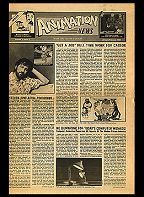 Animation News
Animation News 1986 I was contacted by Expanded Entertainment to create and edit a publication to promote their upcoming animation festival. Animation News was a tabloid that attempted to cover a wide variety of animation information for a general audience. Almost half of the pages were devoted to videotapes for sale by Expanded. After a half dozen issues, it was relaunched as a publication aimed at students and advertisers - Animation Magazine. |
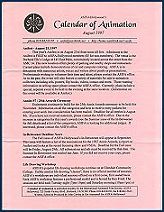 Calendar of Animation
Calendar of Animation 1997-1998 This was the third publication I edited for ASIFA-Hollywood, and the second I created. In an effort to deliver a more timely publication to the membership, I conceived this light newsletter that focused on dates of events taking place. It even had a calendar page that could be removed for quick reference. |
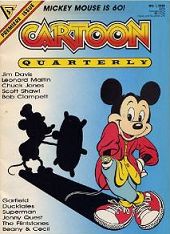 Cartoon Quarterly
Cartoon Quarterly 1992 Jim Korkis (my frequent writing partner and friend) and I were approached by Gladstone, publishers of the Disney comics to create a newstand animation magazine. We conceived Cartoon Quarterly as a kind of People magazine for animation lovers. The articles were lively with plenty of color illustrations. They featured classic characters (Mickey Mouse, Flintstones, Superman, Pepe LePew), new series (Gummi Bears, Captain Power - early cgi animation) and lesser known names (New Zealand's Footrot Flats, artist Corny Cole). We also broke a long tradition in animation publications by actually paying our contributers who included Chuck Jones, Jim Davis, Leonard Maltin, Scott Shaw! and others. The magazine sold well, but Gladstone decided to stick with comic books. |
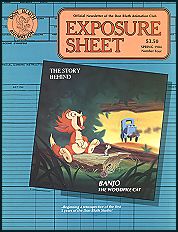 Exposure Sheet
Exposure Sheet 1983-1986 I created, edited and wrote much of Exposure Sheet, "The Official Newsletter of the Don Bluth Animation Club". The publication geared to fans of Don Bluth's work, included articles on Bluth's productions past, present and future and featured plenty of artwork, some drawn just for the magazine. It also had columns written by Don, John Pomeroy and Gary Goldman. There were also writings by Will Finn, Dom DeLuise, and Jerry Beck. I tried to give the publication a varied palette with articles on animation firsts, cel preservation, and styles of animation. |
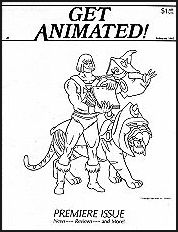 Get Animated!
Get Animated! See the entire line of Get Animated publications here. |
 Graffitti
Graffitti 1981-1982 This was the newsletter of ASIFA/Hollywood. I took over editing chores from Bill Scott for the July 1981 edition. After a few regular issues, I expanded the publication page count and converted it to a quarterly publication. Originally the plan was to transform it into a consumer publication. To supply more timely ASIFA news, I created the monthly In-Betweener, a newsletter which appeared the months between issues of Graffiti. Graffiti was eventually discontinued, but the In-Betweener continued on for many years. |
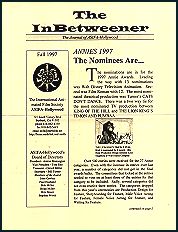 InBetweener
InBetweener 1997-1998 I created the In-Betweener during my first tenor of editor for ASIFA-Hollywood. I returned to edit The Inbetweener (now missing the hyphen) as a seperate publication in 1997. I helped redesign the look and strove to bring more general animation information into each issue, as well as more graphics. |
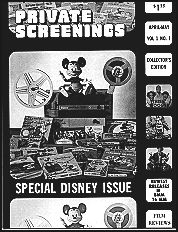 Private Screenings
Private Screenings 1975-1978 I edited and co-created Private Screenings, one of the first magazines dedicated to film collecting that focused on research and articles on actual films available. It was published at a time when the only way one could view movies in their own homes were via 16mm, 8mm or Super 8mm prints. It gained major noteriety when its second issue focused on the topic of film piracy, usually un-acknowledged by the general press and even collector adzines. Other topics included The Three Stooges, Flip the Frog, Amos & Andy, Batman & Robin, Sheet Music, Lost in Space and more. Contributors included David Smith, Randy Skretvedt, Jeff Lenburg, Scott Dickerson and others. (Private Screenings was originally co-published by John Cawley, Steve Kelez and Mike LeFebvre. It was later published by Scott Dickerson.) |
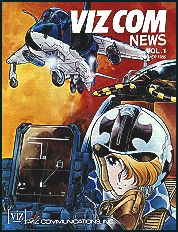 VIZ Com News
VIZ Com News 1986 A representative of the Shogakukan publishing company of Japan approached me to open up a U.S. division that would release manga and anime to the American audience. Their research had told them that Shogakukan was too difficult for Western tongues, so the name VIZ was created. We set up in Glendale and began negotiating with a variety of potential publishers and video distributors. We attended the Comic Con with a major table of manga and a small newsletter, Viz Com News. We also looked into creating anime via the high-speed 3-D like Showscan system and a Japanese version of Chippendales. |
|
Return to Main Page Return to Publications & Writing text and format © John Cawley |